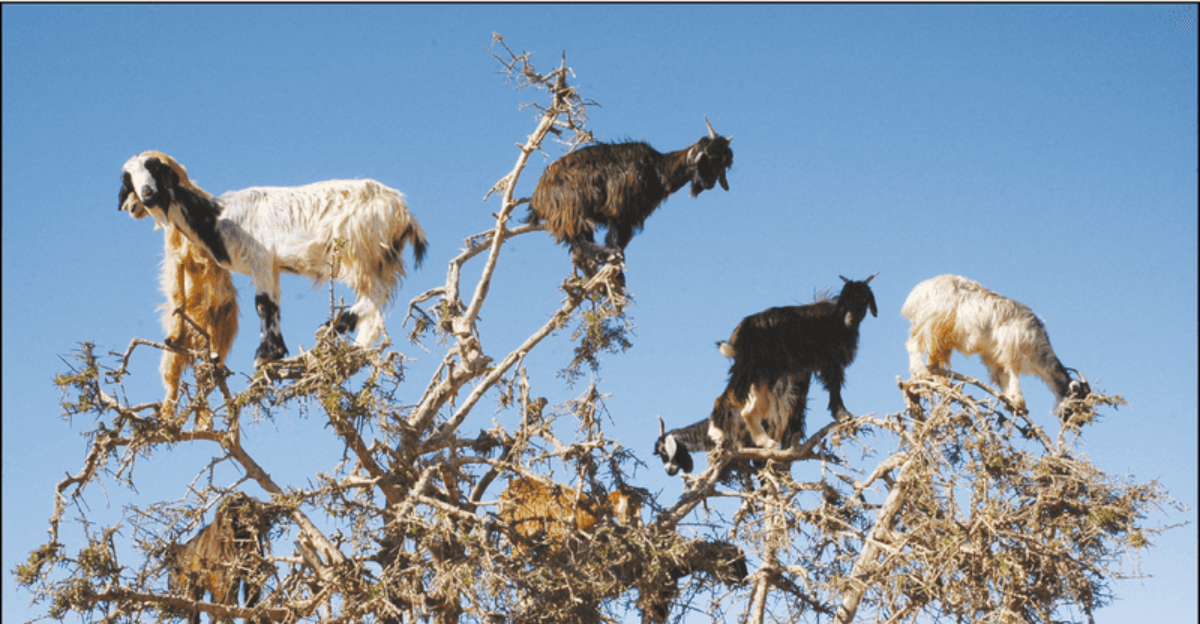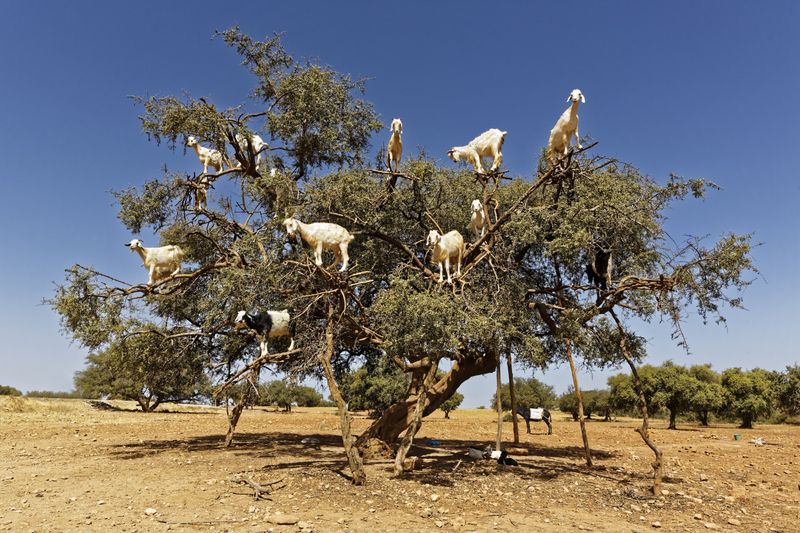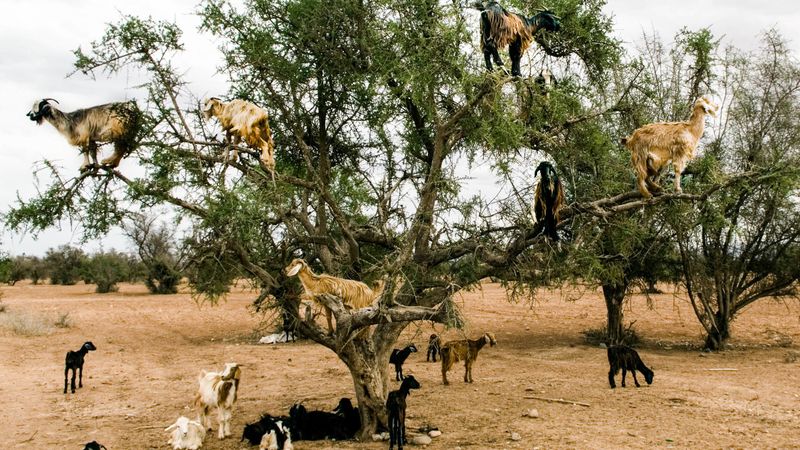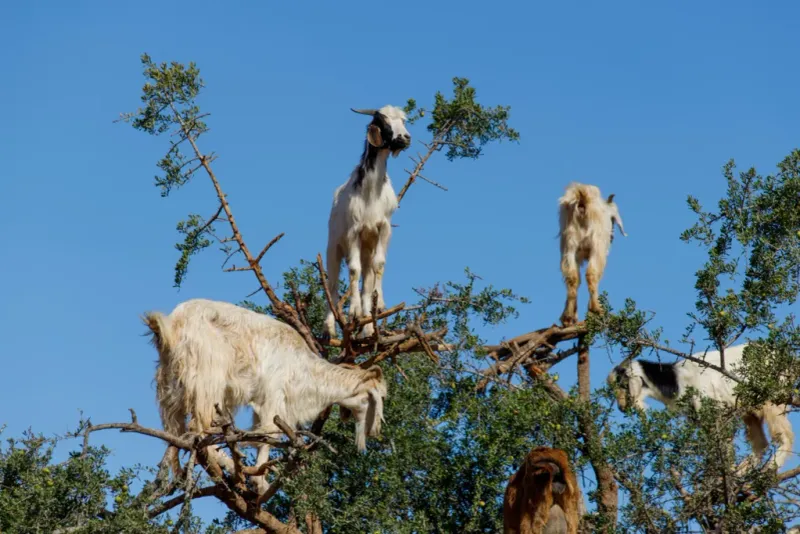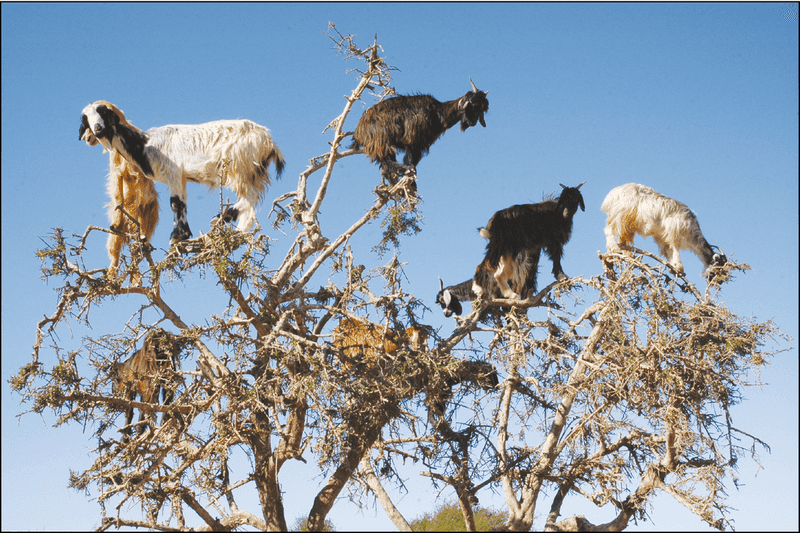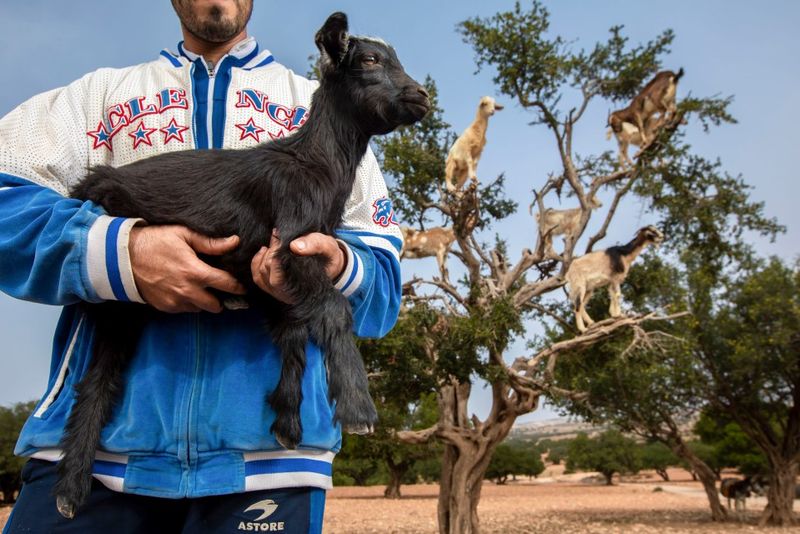Ever seen a goat perched high in a tree and wondered if your eyes were playing tricks on you? You’re not seeing things! In Morocco, goats really do climb trees – sometimes as high as 30 feet up. This strange behavior isn’t just a tourist attraction; it’s actually an amazing example of how animals adapt to tough environments where food is hard to find.
Nature’s Nimble Acrobats
Mountain goats are born climbers, with special hooves designed for gripping rocky surfaces. In Morocco, these skills get put to surprising use as they scale argan trees with remarkable ease. Their split hooves work like natural climbing shoes, allowing them to balance on branches that seem far too thin to support their weight.
Unlike cats that might get stuck, goats navigate tree branches with confidence. They’ve developed this skill over generations, turning what would be impossible for most hoofed animals into an everyday activity. Goats can spend hours in these trees, casually munching away while tourists below snap photos in amazement.
What makes this ability even more impressive is that some goats weigh up to 100 pounds – imagine a medium-sized dog somehow balancing on tree branches! Their natural balance and coordination would make even professional gymnasts jealous.
The Argan Tree Connection
Argan trees are the centerpiece of this unusual goat behavior. Native to southwestern Morocco, these ancient trees produce olive-like fruits with a thick pulp that goats find irresistible. The relationship between goats and argan trees goes back centuries, creating one of nature’s most peculiar partnerships.
During June when the fruits ripen, hungry goats embark on their climbing adventures with a single-minded focus on reaching this prized food. What’s fascinating is that these trees have evolved to withstand the weight and movement of multiple goats at once, with their gnarled branches providing perfect platforms for the animals.
The argan forest spans about 2,560,000 acres, but it’s shrinking due to climate change and human activity. This makes the goat-tree relationship even more precious as it represents a unique ecological interaction that could disappear.
Survival Strategy in Harsh Lands
Life in Morocco’s semi-desert regions offers limited food options for animals. Tree climbing isn’t just a quirky habit—it’s a brilliant survival tactic. When ground vegetation becomes scarce during dry periods, goats look upward for their next meal, adapting to their environment in ways other livestock cannot.
The goats’ climbing behavior represents a perfect example of behavioral adaptation. In regions where temperatures regularly exceed 100°F and rainfall is unpredictable, finding food requires creativity. These resourceful animals have essentially created an aerial feeding strategy that allows them to access food sources unavailable to ground-dwelling competitors.
Farmers in these regions have come to rely on this natural behavior. Rather than providing expensive supplemental feed during dry seasons, they simply let their goats follow their climbing instincts, creating a sustainable farming practice uniquely suited to this harsh environment.
Nature’s Seed Dispersers
Goats play a surprising role as forest gardeners through their tree-climbing habits. After feasting on argan fruits, they either spit out the hard seeds or pass them through their digestive systems. These seeds remain viable and ready to sprout, effectively helping to plant new trees across the landscape.
Scientists have discovered that this process actually benefits the argan forest ecosystem. The seeds that pass through goats’ digestive tracts have their hard outer layers partially broken down, which can improve germination rates. It’s a natural form of seed processing that helps maintain the forest’s health.
This relationship represents a beautiful example of coevolution – the trees provide food for the goats, while the goats help spread the trees’ offspring. Some researchers estimate that a single goat might disperse thousands of seeds annually, making them critical partners in forest regeneration.
Tourism Meets Tradition
The tree-climbing goats have transformed from a local curiosity into an international sensation. Tourists now flock to Morocco specifically to witness this peculiar sight, creating a booming photo opportunity that supports local economies. Tour guides have built entire businesses around showing visitors the best spots to see goats in trees.
Unfortunately, this popularity has led to some concerning practices. Some farmers now place goats in trees artificially for tourists’ photos, sometimes keeping them there for extended periods. Animal welfare experts worry about goats being forced to remain in trees rather than climbing naturally as they would in normal circumstances.
The tourism boom presents both opportunities and challenges for local communities. While it brings needed income to rural areas, finding balance between showcasing this natural phenomenon and protecting both the goats and the endangered argan forests remains a delicate challenge for Morocco’s tourism industry.
